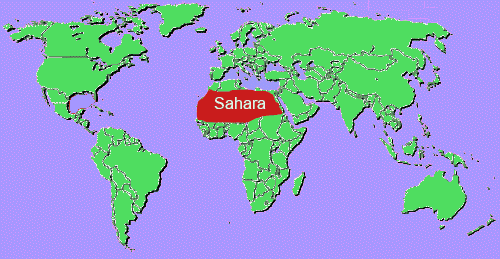
Circle the area on this map

C. The Red Sea is an inlet of the Indian Ocean, which separates Africa from the Arabian Peninsula in southwest Asia. It also separates the Sahara Desert from the Arabian Desert.
B. The Antarctic is the world’s largest desert, followed by the Arctic, Sahara, and the desert that covers about 18 percent of Australia. While it is smaller than the polar deserts, the Sahara is the largest hot desert on Earth.
D. The dust provides iron to tiny organisms at the base of the ocean food chain. The Sahara also provides phosphorus needed by the Amazon rainforest. Dense dust clouds also reduce the ocean surface exposure to sunlight, lowering water temperatures and affecting the formation of hurricanes.
B. The region has alternated between desert and savanna grassland with lakes and rivers over a 20,000-year cycle caused by shifts in the Earth’s axis as it rotates around the Sun. This process called precession causes changes in the North African monsoon, or seasonal rain. These climate changes also have been linked to the ancient migration of humans from Africa.